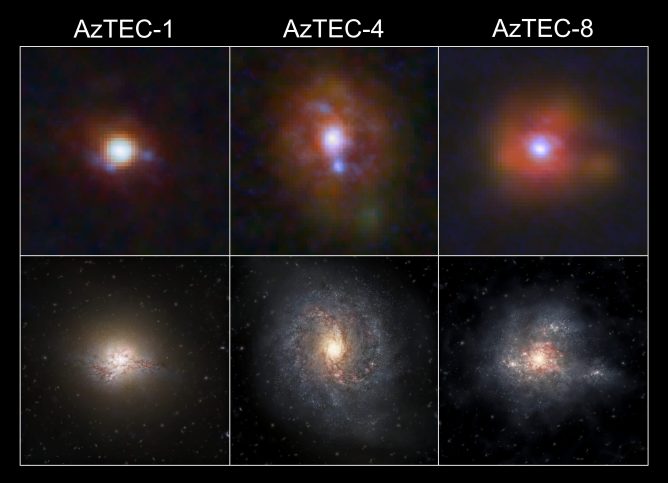An international group of scientists led by the RIKEN Cluster for Pioneering Research has used observations from the Multi Unit Spectroscopic Explorer (MUSE) at the ESO Very Large Telescope (VLT) in Chile and Suprime-Cam at the Subaru Telescope to make detailed observations of the filaments of gas connecting galaxies in a large proto-cluster in the early Universe. Based on direct observations they found that, in accordance with predictions, the filaments are extensive, extending over more than 3 million light years and are providing the fuel for intense formation of stars and the growth of super massive black holes within the proto-cluster.
The observations, which constitute a very detailed map of the filaments, were made on SSA22, a massive proto-cluster of galaxies located about 12 billion light years away in the constellation of Aquarius.
The findings give key insight on the galaxy formation model. Now it is generally believed that filaments in the early universe fueled the formation of galaxies and super massive black holes at places where the filaments crossed, creating dense regions of matter. In accordance with this, the group found that the intersection between the enormous filaments they identified is home to active galactic nuclei—supermassive black holes—and “starbursting” galaxies that have very active star formation. They determined their locations from observations made with the Atacama Large Millimeter/submillimeter Array (ALMA) and the W. M. Keck Observatory.

Maps of gas filaments. For both panels, identified gas filaments are shown in blue color. The background maps are an optical image taken with the Subaru Telescope (left) and a millimeter-wave image taken with ALMA (right). It is found that there are extensive gaseous structures and cosmic web filaments (left); and that the filaments connect a number of starbursting galaxies (right).
Credit: RIKEN
For details, please refer the press release from the Subaru Telescope “Massive Filaments Fuel the Growth of Galaxies and Supermassive Black Holes.”
Paper and the research team
These observation results were published online as T. Umehata et al. “Gas filaments of the cosmic web located around active galaxies in a protocluster” in Science on Octover 3, 2019.
The research team members are:
H. Umehata (RIKEN/The University of Tokyo), M. Fumagalli (Durham University), I. Smail (Durham University), Y. Matsuda (NAOJ/SOKENDAI), A. M. Swinbank (Durham University), S. Cantalupo (EHT Zurich), C. Sykes (Durham University), R. J. Ivison (ESO/University of Edinburgh), C. C. Steidel (Caltech), A. E. Shapley (UCLA), J. Vernet (ESO), T. Yamada (JAXA), Y. Tamura (Nagoya University), M. Kubo (Durham University), K. Nakanishi (NAOJ/SOKENDAI), M. Kajisawa (Ehime University), B. Hatsukade (The University of Tokyo), and K. Kohno (The University of Tokyo).
This research was supported by KAKENHI (Numbers JP17K14252, JP25287043, JP17H04831, JP17KK0098, JP19K03925, JP17H06130, JP17H06130) and NAOJ ALMA Scientific Research Grant Number 2018-09B.









